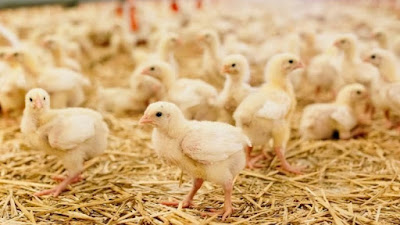Better brooding: 5 focus areas for bird health
The brooding period is a critical time of development for many systems within a bird, and it occurs from the time of placement — even beforehand as the farm prepares for the new flock — to around two weeks of life for the young chicken (chick) or turkey (poult).
Getting the flock off to the right start during brooding can help to positively impact health and performance throughout the flock’s life. There are five areas that must be monitored carefully during the brooding period:
1. Regulation of body temperature
Chicks and poults are unable to regulate their internal body temperature during the first four to six days post-hatch (poults: 39.4–40°C or 103–104°F; chicks: 40–41°C or 104–106°F).
While environmental temperature control is important for the entire flock, it is particularly critical during brooding, as it is important to not overheat nor overcool birds, which can greatly impact performance. Management guidelines for the breed will include the appropriate temperatures for the flock, and these temperatures may differ depending on whether the flock is from younger or older breeder hens. The producer must also consider the temperature of the floor and litter so that the entire environment, and not just the air, is at the correct temperature.
2. Skeletal and muscle system
During their first week of life, poults and chicks gain around four times their original body weight. This significant increase in weight suggests rapid growth of the bird. A large part of this growth is aided by the first feeding phases given to the bird, which focus on nutrients to help with growth, as opposed to the end of the flock, when nutrients are focused on body maintenance. Nutrients such as protein, calcium, phosphorus and various minerals are required to help with this growth. Using minerals that are more bioavailable to the bird and highly digestible proteins can optimize growth during this time and the life of the flock.
3. Immune system
Some breeder hen antibodies are passed on to the offspring through the yolk. These maternal antibodies help to protect the chick/poult during their first two to three weeks of age. However, these maternal antibodies do not complete the immune system of the young bird. Immune organs and immune tissue start developing in the embryo and the hatched bird. Additionally, active immunity is developing in the young bird from in ovo to the field through vaccinations and exposure to pathogens. If there is any stress on the bird, the immune system can be suppressed, negatively impacting health and performance. Depending on the situation, supporting the immune system during this period with various feed additives, can be beneficial to encourage the building of natural defenses.
4. Gastrointestinal system
The gastrointestinal tract has many purposes, including barrier and immune function for disease protection, as well as the breakdown, digestion and absorption of feed and water that can be translated into production parameters. The small intestine is the main area where most of the feed is digested and absorbed. To efficiently absorb feed, there must be a large surface area in the intestinal tract. Increased villi numbers and villi height help to increase the surface area for absorption. The small intestine has rapid development from 17 days of incubation to about 10 days post-placement. During this critical time, the bird’s ability to efficiently digest and absorb nutrients, in addition to mounting strong disease defenses, is developed.
5. Microbiome
Different areas of the bird have different microbiomes, such as the skin and intestinal tract. The intestinal tract microbiome is a part of the barrier function of the intestine. The stability of the microbiome involves a balancing act between the beneficial and opportunistic microbes, the latter of which are disease-causing under stress. Within a few hours of hatching, the small intestine is colonized by different bacterial groups. As the bird ages, the intestinal microflora population changes from immature to mature, reaching a stable balance within two to three weeks in the small intestine and up to six weeks in the ceca. Supporting the early establishment of a beneficial microflora community will allow villi to flourish, absorption to be maximized and the presence of pathogenic bacteria to be minimized. The diet of the bird, including nutrients and feed additives, as well as the water the bird drinks, can have an impact on the intestinal microflora. The poultry barn, especially the litter, has its own microflora that is highly influenced by the gut microflora, and vice versa. It may take several flock cycles to positively change the populations and profile of the poultry barn microflora.
When the birds are first placed in the barn, it is critical that they gain immediate access to feed and water. Supplemental feed and water are generally used to allow for easy transition to the permanent feeding and water system.
Many factors must be taken into consideration to help the birds get off to the right start during brooding, including best management practices, with particular attention to biosecurity, nutrition and health status.

